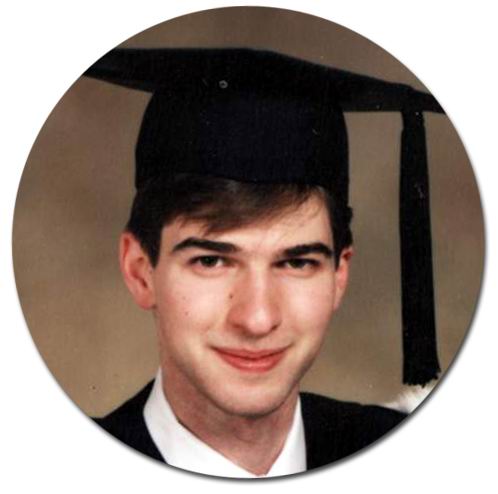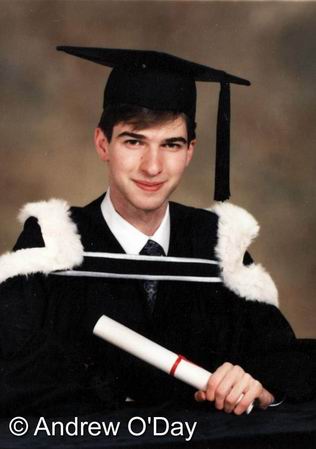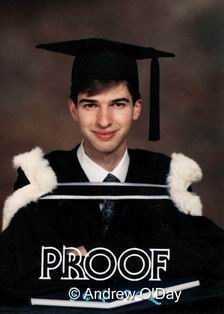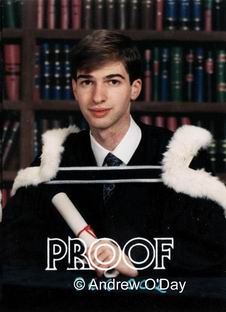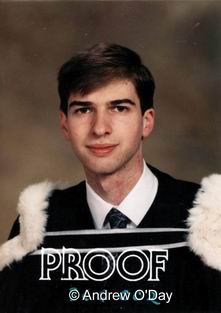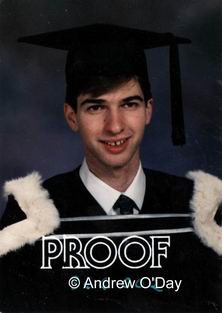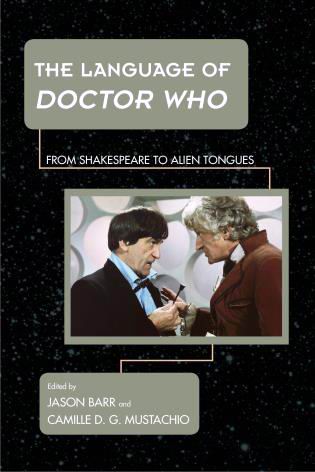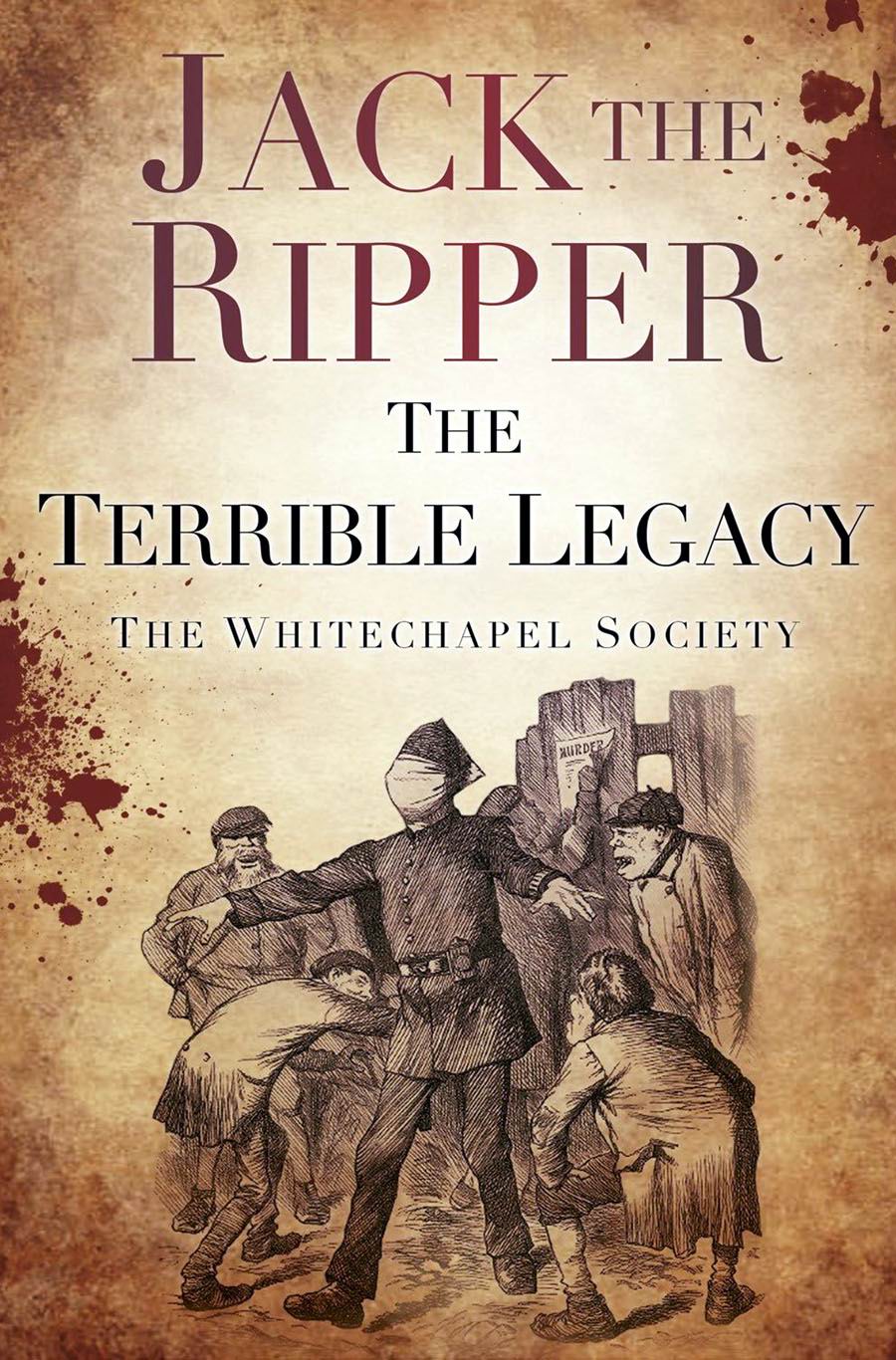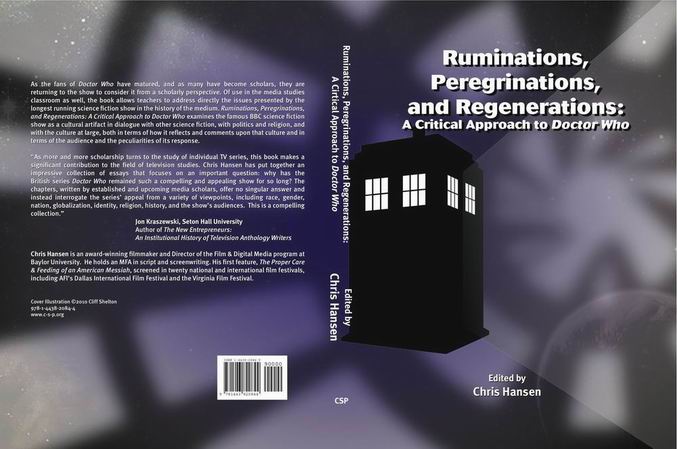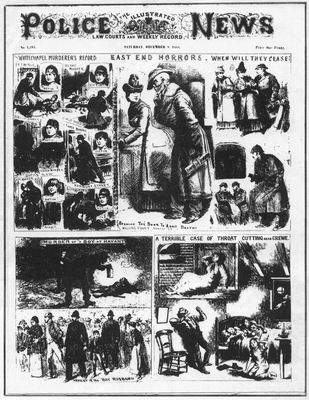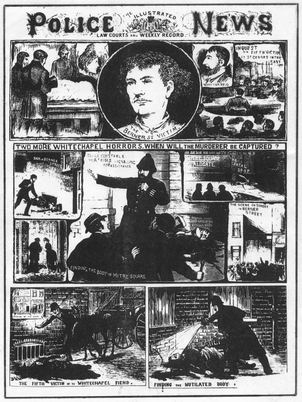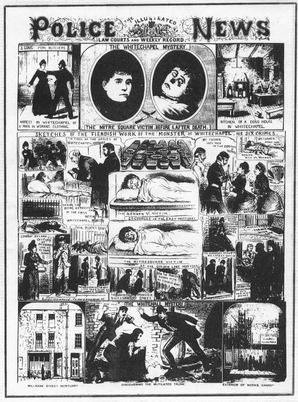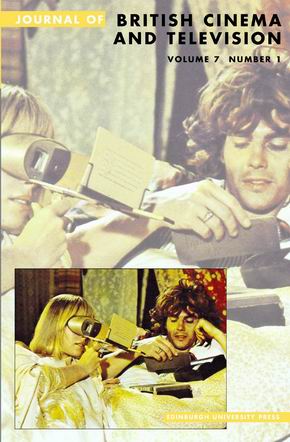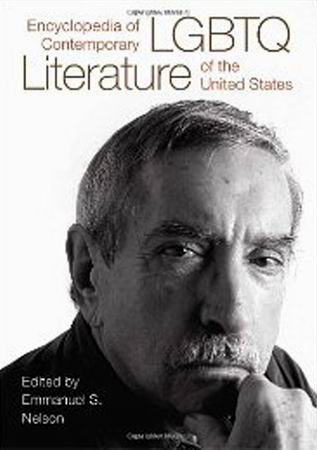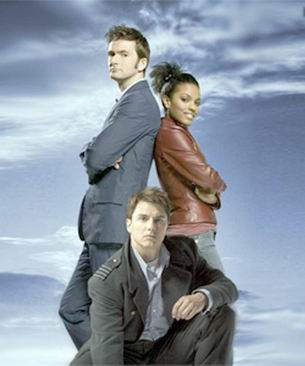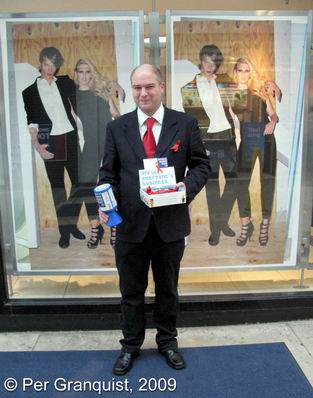|
This page was first published to the internet Sunday 6th June 2010. Latest update: Sunday 31st January 2016. |
|
This is the Home Page |
Andrew O'Day: In Words and Pictures |
Andrew O'Day: Facets of Fandom |
Updated Sunday 27th March 2016 |
|
Doctor Who Producers: Audio Interviews conducted by Andrew |
|
|
Historically Speaking: Verity Lambert Interviewed - Click here |
Circles and Archways: Barry Letts Interviewed Part 1 Part 2 Part 3 |
|
The above audio tracks are © Copyright Andrew O’Day. They were sound engineered / sharpened by Matthew R. Hale (www.mrhale.co.uk) For more information go to Andrew's Interviews page |
|
|
Based on a PhD: non-Doctor Who writings (Copyright © by Andrew O'Day) |
Rod Serling’s The Twilight Zone Gene Roddenberry’s Star Trek |
|
Right / Below: Links to text from a slightly revised, but copyright © PhD by Andrew. |
| Essays and Writings: (All © Andrew O'Day) | History and Fiction in Doctor Who |
Towards a definition of satire in Doctor Who Re-reading Christopher H. Bidmead Terrance Dicks’ “The Five Doctors” |
| Non-Doctor Who writings: |
David Wickes’ Jack the Ripper and Telefantasy ‘David Wickes’ Jack the Ripper and Telefantasy EXPANDED VERSION |
|
Andrew's autobiographical writings: |
|
|
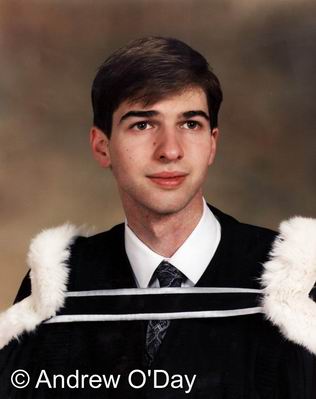 |
Born in Birmingham, England of dual British and American nationality, Andrew O'Day spent his childhood in Washington DC, Oxford and Milton Keynes. A firm Doctor Who fan after the transmission of BBC2's "The Five Faces of Doctor Who" season in the Autumn of 1981 and Longleat's "20 Years of a Time Lord" Convention two years later, he tried his hand at fanzine editing. Studying at William Shatner's Alma Mater, McGill University in Montreal in the 1990s, Andrew met Forbes March who was staying in the same Hall of Residence. Best known for playing Jesse Kilmartin in Mutant X, Forbes helped him get a job researching aspects of culture for “The Professor's Page” in the Halifax, Nova Scotia newspaper "The Chronicle Herald" (1992). Awarded a BA in English Literature from McGill in 1996, Andrew returned to England briefly where he appeared in a very small role in the Oxfordshire based production company Misfits video Iron Law. In 1998, he returned to the country permanently and took an MA in Text and Performance Studies at King's College, London in association with the Royal Academy of Dramatic Art. One of his instructors at RADA was Gregory de Polnay, best known to Doctor Who fans for his role as D84 in the highly acclaimed 1977 story "The Robots of Death" starring Tom Baker. In January 2007, Andrew was awarded a Ph.D in Television Studies from Royal Holloway, University of London for a thesis on science fiction television (mainly Doctor Who) entitled "Borderline Discourses: Telefantasy Metafictions”. In 2005, Andrew was awarded a Master's Certificate in Teaching in Higher Education from Royal Holloway, and between 2004 and 2007, Andrew also worked as a part-time lecturer at Kingston University, a part-time tutor at Royal Holloway, and as both a part- and full-time lecturer at the University of Winchester. In the Autumn of 2010, he passed an intensive weekend TEFL course in Oxford. He has also co-written the book Terry Nation, with Jonathan Bignell, Professor in Television and Film Studies at the University of Reading. Published by Manchester University Press in 2004, the book focuses primarily on Nation's science fiction work for Doctor Who, Survivors, and Blake's 7. He appeared as a guest at Cult TV 2004, signing copies of the book, as well as at the 10th Planet Store in Barking. Since then, in the area of Doctor Who studies, Andrew has contributed a chapter “Towards a definition of satire in Doctor Who” to Chris Hansen’s edited collection Ruminations, Peregrinations, and Regenerations: A Critical Approach to Doctor Who. In 2011 he gave a paper “Surveillance and Space in Doctor Who” at the Spaces of Television conference held at the University of Leicester. Between 2008 and 2011 he also acted as a semi-regular reviewer of academic Doctor Who books for the “Journal of British Cinema and Television”. In 2008 Andrew had a chapter on representations of Jack the Ripper in the 19th century visual press (“Predators and Prey: Newspaper Editors, Readers and the Monstrous”) published in an eBook, based on a conference paper given in 2007. In July 2011 Andrew returned to the world of Jack the Ripper, giving a paper at the academic conference Alien Nation on David Wickes’ 1988 centennial production and telefantasy, an expanded version of which is now available on this website. In October 2011, Andrew joined the Whitechapel Society. He attended the Whitechapel Society’s conference, held on Brick Lane, on the weekend of October 1 and 2 2011 and was delighted to finally meet David Wickes, Sue Davies, and John Cameron. His article “Drama in the Whitechapel (2009) serial” was published in the December 2011 edition of the Journal of the Whitechapel Society. He wrote two articles on Jack the Ripper walking tours for that same journal (February 2012 and August 2012) which involved him going round and round and back to Mitre Square in a recursive trap. Andrew also wrote an article on the 1973 Barlow and Watt Jack the Ripper for the October 2012 edition, and a chapter on Richard Mansfield was published in the book Jack the Ripper - The Terrible Legacy. He signed copies of the book at The Crosse Keys on August 3 2013. 2013 saw two chapters on Doctor Who fandom by Andrew published in an edited collection, Doctor Who In Time and Space. He had a piece on Peter Capaldi’s casting as the Doctor published on I.B. Tauris’ Who Watching website (‘Doctor Who and The Tugging of the Lapel’ which can be accessed here), and a chapter, in an edited collection New Dimensions of Doctor Who on pace in the Russell T Davies and Steven Moffat eras of Doctor Who. He also edited a collection of his own of essays on the Steven Moffat/Matt Smith era of the programme. Titled Doctor Who: The Eleventh Hour – A Critical Celebration of the Matt Smith and Steven Moffat era, the book was published by I.B. Tauris to coincide with the programme’s 50th anniversary year. A brief interview with Andrew can be read on the I.B. Tauris Who Watching website which can be accessed here. Additionally, to celebrate the 50th anniversary Andrew wrote the feature The Time Beetle: A Life With and Without Doctor Who which can be accessed here. 2014 saw a chapter of Andrew’s on Doctor Who and Language published in an edited collection, as well as an article on the comedic Jack the Ripper walking tour for the August edition of The Whitechapel Society Journal and a chapter on the press published in The Little Book of Jack The Ripper, produced by The Whitechapel Society. Andrew also helped research actor biographies for the convention brochure Grange Hill Memories. He also had an article on 1960s Doctor Who published on the fbi-spy website which can be accessed here and had two pieces published on the Television Heaven website: one on the BBC’s 1973 Jack the Ripper and one on The X Factor titled ‘The Commercial Factor’ which can be accessed here. 2015 saw an article by Andrew on The Bloodhound Gang and an accompanying episode listing published on the Television Heaven website which can be accessed here. An acknowledgement of additional television sources can be seen here. Andrew has also had an article on EastEnders’ 30th anniversary ‘Who killed Lucy?’ storyline published on the same Television Heaven website which can be accessed here. Andrew furthermore had an article on the ‘Jack the Ripper’ walking tour published in the February 2015 edition of The Whitechapel Society Journal. Andrew’s likeness was also used for the character of Grecco in The Essential Book of K9 story ‘Stranger on the Train’. 2016 will see the publication of a piece Andrew has written for the Oxford University Doctor Who Society magazine Tides of Time on the current state of academic ‘Doctor Who Studies’ aimed at undergraduates who may wish to enter the field. Andrew has been a member of that Society since Autumn 2014. Andrew has also embarked on a major project - an edited collection on the Peter Capaldi and Steven Moffat era of Doctor Who titled Twelfth Night to be published by I.B. Tauris. In the area of LGBT studies, Andrew has also contributed to the encyclopaedias “LGBTQ America Today” (entries on Gay Autobiography, New York City, Gay Poetry, and the West Coast New Narrative Movement) and “Encyclopedia of Contemporary LGBTQ Literature of the United States” (entries on Gay Children’s Literature, Gay Pulp Fiction, Gay Science Fiction, Gay Sports Literature, and Gay Young Adult Literature). He has also had an article “Doctor Who, omnisexuals, and penis envy” published on the LGBT Pink News website which he has revised for this site. Between 2007 and 2009 in his spare-time, Andrew did volunteer work (packing and distributing condoms and Outreach work) as part of the Gay Men’s Team for Terrence Higgins Trust in Oxford, a role he resumed in the Summer of 2014. He also continues to be engaged in fundraising on World AIDS Day each year. Andrew has also had a review of the AIDS Project Los Angeles’ Writers Workshop volume From a Burning House and a short piece on Hollyoaks published on the Beyond Positive website which can be accessed here. Andrew also completed an LLB (Hons) at the University of Birmingham in 2013, for which he was awarded 59.4 (2:2). During the academic year 2013-14 he took an LLM in Criminal Law and Justice at the same Law School, for which he was awarded a Merit (66%). A revised copy of his LLM Dissertation on Prisoner Autobiography can be read here. He is a member of the University of Birmingham’s Holdsworth Club and of the Inner Temple. |
|
Below: Andrew's Graduation Photos (1996) |
|
The Essential Book Of K9 By Paul M. Tams and Bob Baker With special guest Andrew O'Day on page 86 Published by Meteoric Books ISBN-10: 178280532X ISBN13: 978-1782805328 "All you ever wanted to know about the World's favourite Robot Dog....From the inside out!" |
Andrew with authors Paul Tams and Bob Baker and a copy of The Essential Book of K9 at a signing in September 2015. Far left: The cover to the book. |
| Below: Covers to the two most recent editions of The Whitechapel Society Journal that Andrew has contributed to. Covers to other editions that Andrew has contributed to can be found further below. | |
| The Journal of the Whitechapel Society Edition 60, February 2015. | The Journal of the Whitechapel Society Edition 57, August 2014 |
 |
 |
|
Errata: ipad should simply read pad |
|
 |
The Little Book of Jack The Ripper - The Whitechapel Society Presenting a compact guide to the most famous case of them all. The Whitechapel Society is London's premier society for the study of Jack the Ripper and related Victorian / Edwardian social history. It is a worldwide society, hosting talks, presentations, and guided walks throughout the year. Their magazine, The whitechapel Journal, is the largest subscription print magazine in the field of Ripperology. The Jack the Ripper mystery is recognized as being the greatest 'whodunnit' the world has ever seen. Conjuring up images of swirling fog, top hats, and dark alleys, it is easy to see why this fascinating tale still continues to capture the imagination. This little book is crammed full of hundreds of true facts and anecdotes about this most enduring of mysteries—a book which you can dip in and out of during the twilight hours, if you’re brave enough. Compiled by the Whitechapel Society, and drawing on their incredible archives, it will delight true-crime enthusiasts everywhere. Their latest book contains a chapter written by Andrew and is available to order from Amazon. Order from Amazon.co.uk Order from Amazon.com |
 |
|
|
Above: During 2014 Andrew contributed biographical notes to the brochure for the first Grange Hill cast reunion event titled Grange Hill Memories. Andrew also took many photos of the cast on the day and a page of them can be found by clicking here or by clicking on the pictures above. |
|
The Language of Doctor Who: From Shakespeare to Alien Tongues (Science Fiction Television) [Hardcover]by Jason Barr, Camille D. G. Mustachio With a chapter (and Bad Wolf-related joke!) written by Andrew O'Day. |
|
Above: The Three Doctors or One Doctor and Two Professors: Dr. Andrew O'Day (editor of The Eleventh Hour) with Professor James Chapman (author of Inside the TARDIS) and Professor Matt Hills (editor of New Dimensions of Doctor Who)...and a Dalek at the University of Hertfordshire's Doctor Who conference book launch, September 2013 |
| Doctor Who The Eleventh
Hour Edited with an Introduction by Andrew O'Day. Chapters by Richard Hewett, Frank Collins, Matthew Kilburn, Dee Amy-Chinn, David Budgen, Simone Knox, Jonathan Bignell, Piers D. Britton, Vasco Hexel, Matt Hills, Brigid Cherry, Neil Perryman, and Ross P. Garner Order from Amazon.co.uk Order the paperback or hardcover from Amazon.com |
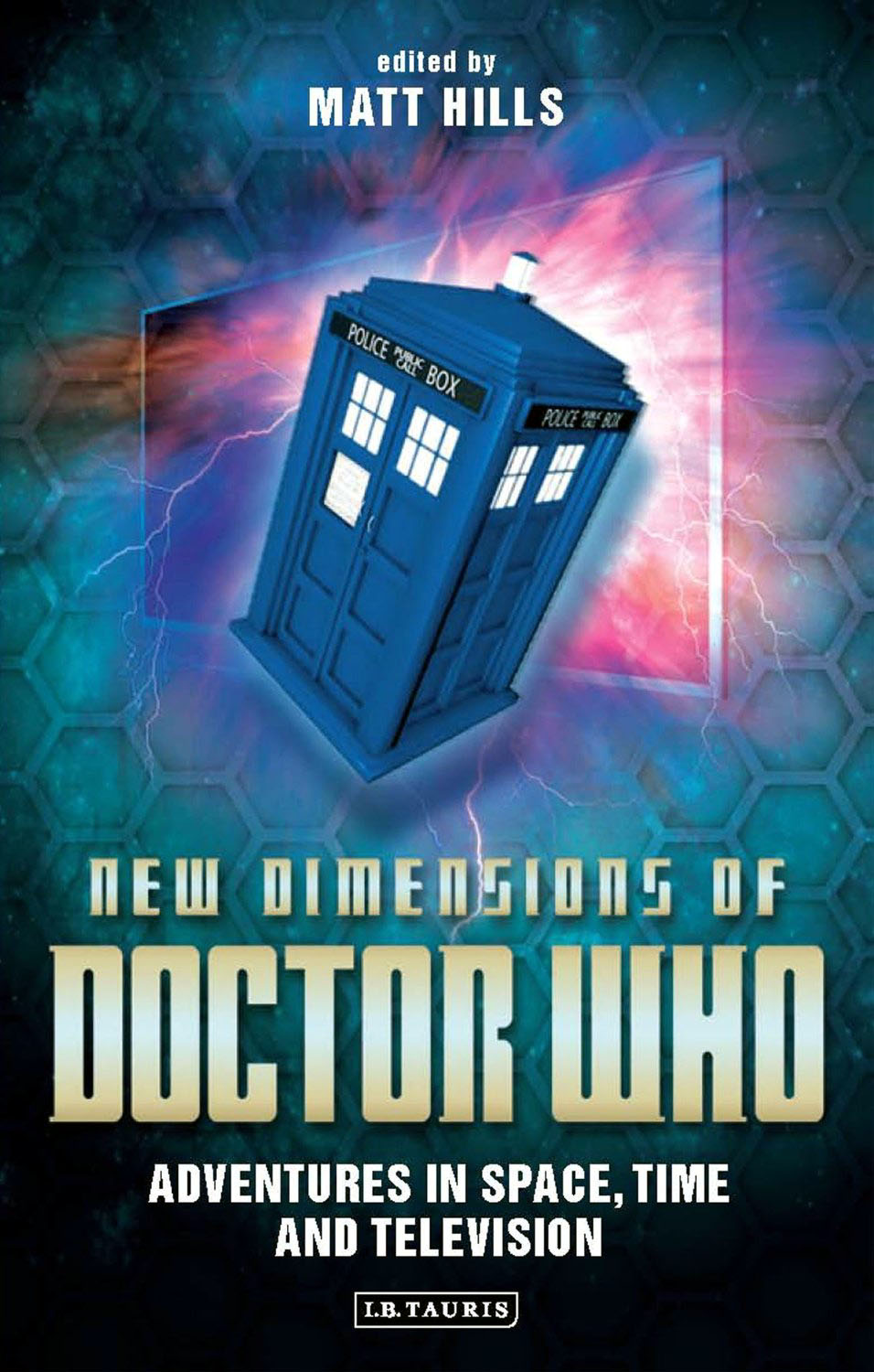 |
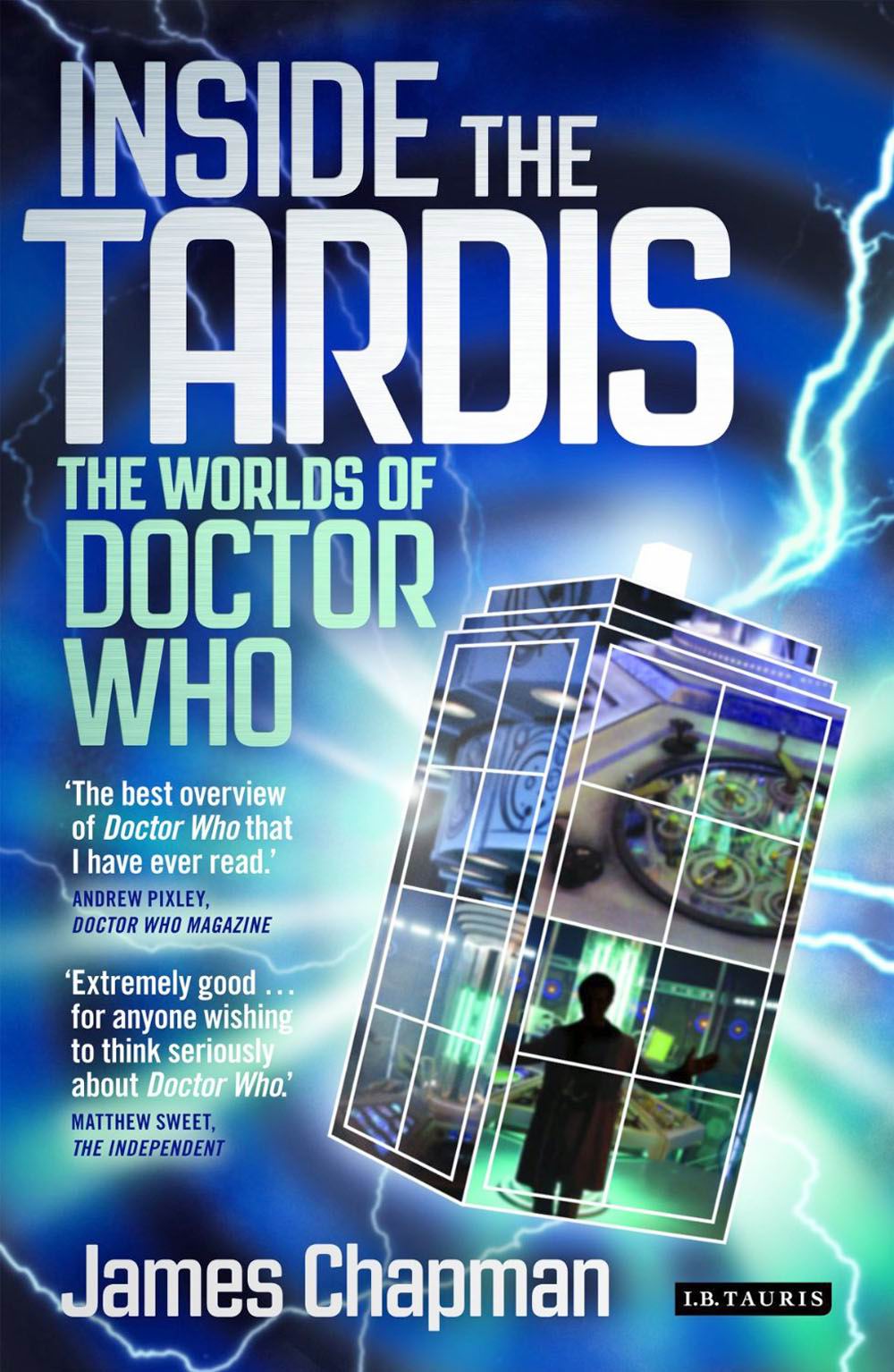
|
Far left: New Dimensions of Doctor Who Edited by Matt Hills with a chapter written by Andrew Order from Amazon.co.uk Order from Amazon.com Left: Inside The Tardis By James Chapman Order from Amazon.co.uk Order from Amazon. com |
|
Far Left: Jack The Ripper The Terrible Legacy By The Whitechapel Society with a chapter by Andrew Order from Amazon.co.uk Kindle edition: Amazon.co.uk Order from Amazon.com Kindle edition: Amazon.com |
||
|
Left: Doctor Who in Time and Space Edited by Gillian I Leitch with two chapters written by Andrew. Errata. Order from Amazon.co.uk Kindle edition: Amazon.co.uk Order from Amazon.com Kindle edition: Amazon.com |
Below: covers of a journal to which Andrew has contributed articles to since late 2011.
Links to the pages Andrew's articles appeared on also appear here.
The Whitechapel Society have a website which can be found at: http://www.whitechapelsociety.com/
| The Journal of the Whitechapel Society Edition 41, December 2011. | The Journal of the Whitechapel Society Edition 42, February 2012 |
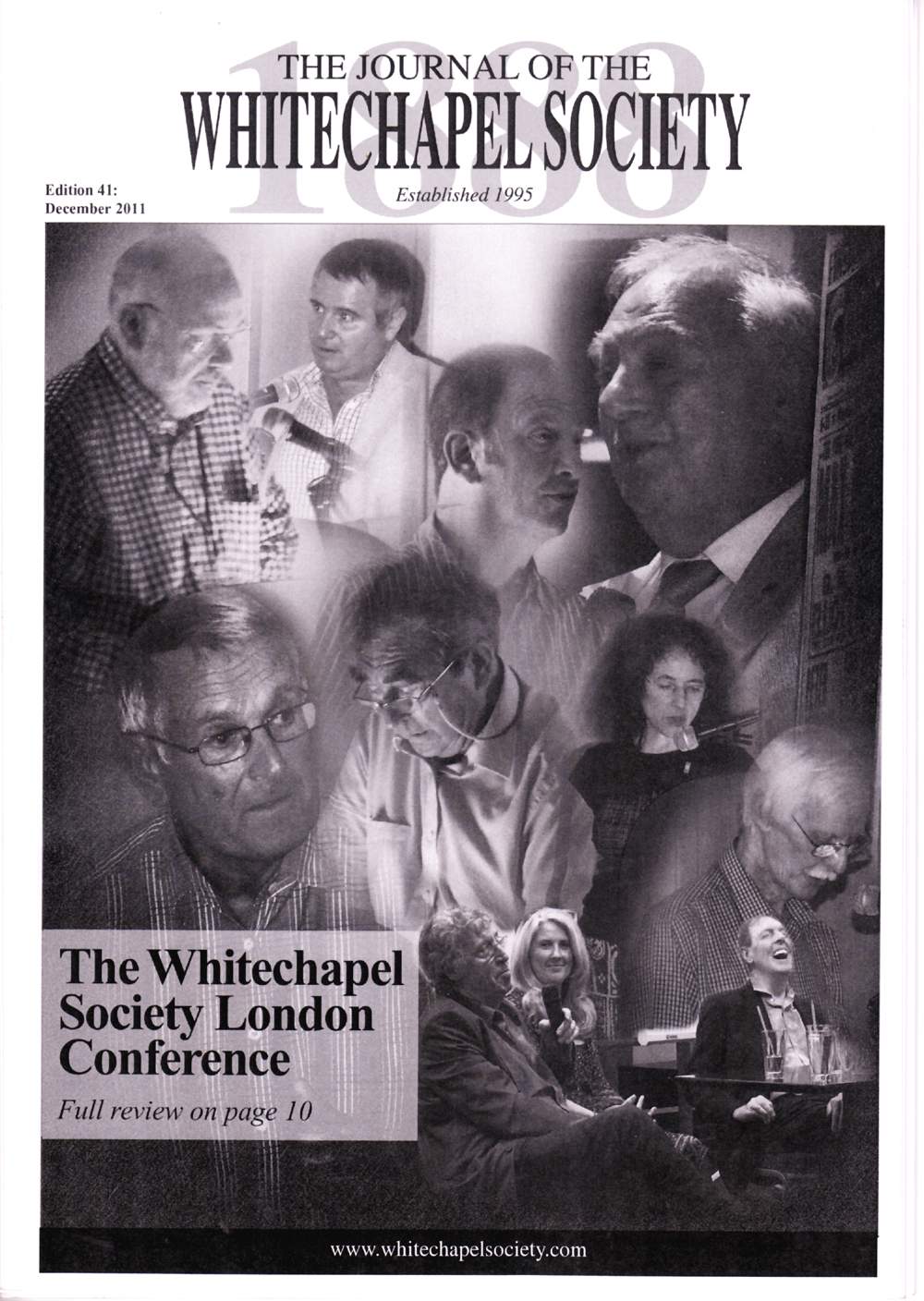 |
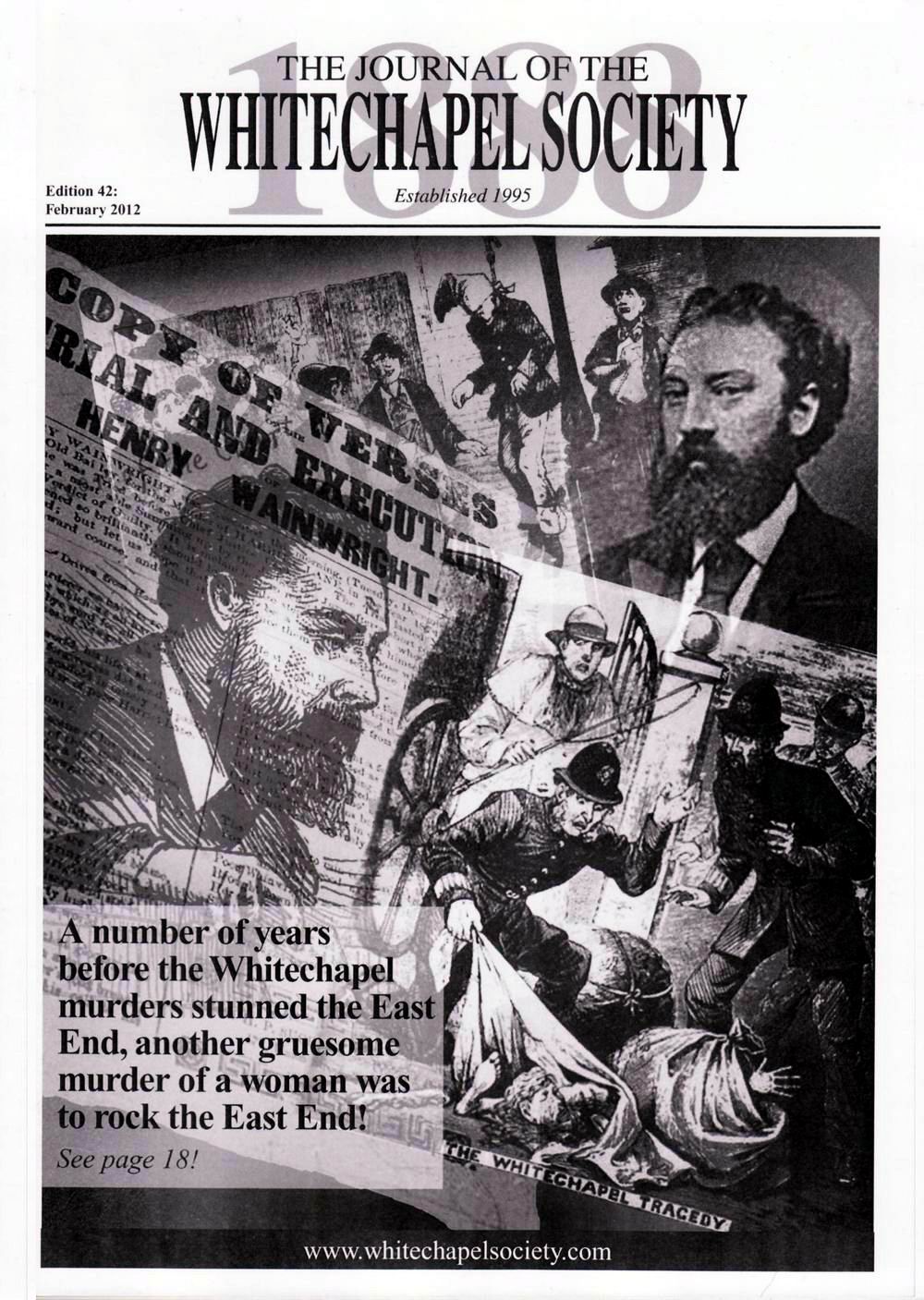 |
The Journal of the Whitechapel Society Edition 45, August 2012. |
The Journal of the Whitechapel Society Edition 46, October 2012 |
 |
 |
Below: Book containing a chapter written by Andrew: a revised version of his chapter can be accessed by clicking here.
Below: Book cover and flyer for Andrew's 'Terry Nation' book which was co-written with Jonathan Bignell
Below: The Monstrous Identity of Humanity, an eBook for which Andrew provided a chapter titled 'Predators and Prey'.
Below left: Andrew is a semi-regular contributor to 'Journal Of British Cinema And Television'.
Below middle: The book 'LGBTQ America Today', to which Andrew contributed.
Below right: Andrew also contributed to the book 'Encyclopedia of Contemporary LGBTQ Literature Of The United States'.
Below: Text by Andrew
|
“Writing about writing: that’s the aim of this piece. I don’t think I come across very well in conversation but I love writing and hope to continue with it for many years to come, even though it is coming at the expense of lots of cigarettes and tea! I think that every good piece of writing needs five essential things which I strive for in my work. That writing needs a clear focus and a smooth style are obvious, as too is the fact that it needs to be as free as possible of errors. But I also think that writing needs to both get to the heart of what is going on in the issue addressed and be as intriguing as possible to get people to think. As you can probably gather from these web-pages, I have a ‘passing’ interest in Doctor Who! I therefore see writing as not only an egotistical thing and a way of making myself immortal but very rewarding in helping build a relatively new field. In my (primarily) Doctor Who work I have striven to do exactly what I was taught to by my outstanding doctoral supervisor Jonathan Bignell (with whom I wrote the book Terry Nation) which is to relate everything to key notions in Television Studies." “So how did I become
specifically an academic writer about Doctor Who? It all started in
Montreal where I had actually neglected the good Doctor for many years in
pursuit of other activities, until just before my graduation in 1996 I
stumbled across a store which sold Doctor Who videotapes. And then
another. Then not much happened until the summer of 1997 during and after
the Whispers of Terror. I had done my BA in English Literature and
so knew a lot about how to do close readings but nothing at all about
Television and Media Theory. I had spent a lot of time with Milton’s
Paradise Lost and Spenser’s Faerie Queene and then with
not much to do but lie in bed and stare at white walls, in a less secure
environment than the one before, thought about snakes and thought about
“Kinda” (1982) and “Snakedance” (1983) and was allowed to watch old
episodes where I applied close textual analysis to them. So, for example,
I realised that the Master’s red-Satanic cloak in “The Daemons” (1971)
actually has a labyrinthine design on it, the labyrinth being a common
Christian symbol for losing one’s way in sin, and seen not only in Milton
and Spenser’s epics and in Milton’s masque Comus, but also in
William Langland’s Piers Plowman, Dante’s Inferno, Ariosto’s
Orlando Furioso, Tasso’s La Gerusalemme Liberata, and
as far back as Scripture. So it is interesting how such an image
circulates in culture. Then there are other labyrinths on walls in
“Snakedance” and the warning about following “the path of the snake”.
Buddhism points to the way out from the “maze” when it guides people to
“restore the purity of their original mind” (quoted on
www.esscr.org/g103_Buddhism. “It’s interesting too because not only does knowledge of literature open up an understanding of symbols but also a whole way of storytelling. Studying Spenser’s The Faerie Queene was not only useful in pointing to the significance of the labyrinth image but also in the way that its story is told in a certain allegorical manner with names being symbolic. For example, in “Snakedance” Manussans thirst after things. It is their ancestors who created the Mara: the Mara was created through the Great Crystal absorbing the hatred and greed inside a person and transforming those qualities into physical matter. Lady Tanha thirsts after a meaningful relationship with her son Lon who is himself constantly bored and takes an interest in the Legend of the Mara to occupy himself; neither can be satisfied. Other Manussans are concerned with the material things of this world. Ambril, the academic historian, sees objects as ‘exquisite’ works of art, and desires the honour of having discovered these himself. He is, as Doctor Who fan Anthony Brown notes in In-Vision, ‘devoted to material rewards’, believing the Legend of the Mara to be nothing more than a fiction. Significantly, it is Ambril whom the Doctor gets to try on the headpiece of the ‘Six Faces of Delusion’, composed of five faces, to illustrate that the sixth head is the wearer’s own. Then there’s the Showman, representative of the more common person, obsessed with greed, like the Fortune Teller, both of whom work in the bazaar, stressing the feel of being set in the Far East (see Brown). Brown notes that the Showman has become convinced that financial rewards are all that matters and has abandoned his interest in the deeper mysteries of life. The Showman’s stating that ‘there’s always someone standing there with their hand out waiting to be paid’ is highly significant since putting one’s hand out in the narrative is associated with being tempted (Mara), to which the Showman seeks a partnership. By contrast, Dojjen lives in the hills on nuts and berries, wanting for nothing, and undergoes the snakedance which is one of purifying the mind. So knowledge of allegory assists in reading Christopher Bailey’s “Snakedance” and also “Kinda”. There are then “interpretative markers” in “Kinda” “by means of…names” where, for instance, Dukkha (suffering) describes the world’ sickness cured by jhana (meditation) (see Tulloch and Alvarado 1983: 270-1). These narratives are then partly the Buddhist equivalent of Spenser’s Christian epic (though Christianised with a more recognizable demon). And then understanding how to read allegorically assists in reading the secular allegory of Terry Nation, with Spenser indeed cited in Jonathan Bignell’s and my book Terry Nation (Manchester, Manchester University Press, 2004, 159). That’s not to say that Spenser was the only one who worked in this allegorical manner, just that it was through Spenser that I reached these conclusions. And then an older Anglo-Saxon epic Beowulf also helped in reading the body politic allegory running through Nation’s work (cited in Bignell and O’Day 2004, 146).” “DVD Watch 2011 has seen me returning to “Kinda” and “Snakedance”. Looking at the Buddhist ideas in “Kinda” in their book Doctor Who: The Unfolding Text, Tulloch and Alvarado write that “Panna is the one who, through intuitive wisdom, sees the nature of reality as transient and gives birth to ‘karuna’ (active compassion) for all those who are still trapped in the ignorance of quest and definition’ (1983: 272). So “Kinda” expresses this through an allegory of doubling where Panna and Karuna are separated (literally into two characters) but unified as “one”. My other work, including for the book Terry Nation, shows how I am interested in doubling and so here “Kinda” uses a common literary technique too. The other common technique in “Kinda” is the use of “mirroring scenes”. The “mirroring” between the opening scene outside the TARDIS where Adric and Nyssa play draughts and the scene of the old couple playing in the “Wherever world” has long been recognized. Sarah Sutton almost (seemingly accidentally) points to another “mirroring scene” in the DVD commentary when she states towards the end of episode three that the bit with the circles and the mirrors is coming up, to be correctly told that this comes much later. In fact, the Doctor and Todd’s vision is of a circle and The Trickster being pulled onto the ground, while towards the end of episode four (the final episode) the Doctor has trapped Aris in a circle (this time of mirrors) and the Mara (the snake) detaches itself from him and is banished. This invites a comparison and indicates a progression in the narrative.” “Chaucer has also had an effect on my progression as a writer through his use of the frame narrative of authors telling stories and audiences listening and through his other metafictional devices. There was that nightmarish Chaucer course of Fall 1996 and my desperate attempts to finish my paper during the Summer of 1997 amidst the ‘Whispers of Terror’ that I mention below. That paper. I seemed to be constantly losing the illustrations that went with it. But I took from that course some valuable things – the need to construct original essays and also a powerful idea about narrative about narrative. At that particular time during the badgering non-ending whispers I was also looking at the AIDS volume From a Burning House and ideas of telling, and listening to, narratives there, of being witness. For me suddenly everything was about frames. And I tend to be attracted to the visual as well as now thinking visually (where I am always thinking about how the essay on the page will look with ideas springing to life). So there is that memorable image of Jamie and Zoe being crushed within the pages of a book at the end of episode four of the Doctor Who narrative “The Mind Robber” (1968), and “Carnival of Monsters” (1973) plays with ideas of the frame. And eventually things, such as my detailed analysis of “Castrovalva” (1982), took off from there.” “It’s also interesting to see how the PhD work I have done fits in with that by others. A lot has been done other than Lance Parkin’s “Nudge Nudge Wink Wink” (Doctor Who Magazine 323 (2002), 10-16). I have drawn attention to sources of others who have dealt with the later Hartnell historical shaped by books and films (e.g. Philip MacDonald’s “A Foreign Country”, Doctor Who Magazine 194 (1992), 42-6). As I have also noted at the beginning of my piece on Difficult Television, Alan Barnes draws attention to the self-reflexiveness of “The Deadly Assassin” (1976) with its gothic manuscript scrolling up the screen at the start and the name of the figure Chancellor Goth (“Tales from the Crypt”, Doctor Who Magazine 282 (1999), 8-12). As I show in relation to Robert Holmes’ other script “Carnival of Monsters” (1973), Holmes reflects on the playfulness of television and his signature can be detected by the way in which he reflects on another genre of mood, the gothic, in “The Deadly Assassin”. As Andy Murray also noted in the edited collection Time and Relative Dissertations in Space (Manchester, Manchester University Press 2007), in the scenes in the Matrix “Goth warns the Doctor that he is ‘the creator here […] these are my rules’” and that Goth can be seen as “Holmes’ substitute, hunting down the Doctor with his imagination” (“The Talons of Robert Holmes” pp. 217-32). “City of Death” (1979) can also be seen as metafictional, when two art critics discuss the exquisiteness of the Doctor’s TARDIS. Again in the edited collection Time and Relative Dissertations in Space (Manchester, Manchester University Press 2007), Alan McKee shows how consumers (fans) make value judgements about what is good and bad culture (“Why is ‘City of Death’ the best Doctor Who story?” Pp.233-45). This fits in with my discussion of fans making detailed close readings of Doctor Who using “Castrovalva” as an example, in that both pieces can be seen as metafictionally reflecting on their reception. My reading of “Vengeance on Varos” (1985) can also be seen as taking the narrative in a different direction than Jim Leach (Doctor Who, Michigan: Wayne State University Press, 2009) who, like others, sees it as a comment on video-nasties, but developing on others draws a distinction between characters, watching viewscreens, saying that a tortured man is only acting and the point that, of course, an actor is portraying him on our television screen. That too is metafictional. And looking at other telefantasy, Alison Peirce has drawn attention to the metafictional nature of John Masefield’s The Box of Delights (1984) in her article “A Broken Tradition: British Telefantasy and Children’s Television in the 1980s and 1990s” (Visual Culture in Britain 11.1 2010: 109-124). For it is metafiction that Peirce describes when she draws an analogy between the Punch and Judy man Cole Hawkins (played by Patrick Troughton) with his magic box and “the response of the child viewer, sitting at home in front of his/her own ‘magic box’ watching a world of fantasy emerging into the realm of the everyday” (2010: 109). It’s also interesting to see what can still be done. For example, given Christopher H. Bidmead’s interest in thresholds and doors in “Logopolis” (1981) and “Castrovalva” (1982) what influence did he have on Steve Gallagher’s “Warriors’ Gate” (1981)? “Warriors’ Gate”, like “Terminus” (1983) is a narrative about slavery and freedom, but “Warriors’ Gate”, like “Castrovalva”, contains the notion of the opening in its very title and Bidmead’s story-arc of the boundary between E-Space and N-Space is present.” “Also just as
Bidmead’s own “Castrovalva” draws attention to its fairy tale like
construction, Johnny Byrne’s “The Keeper of Traken” reflects on its
construction of what is traditionally thought of as fantasy, and can also
be regarded as metafictional. “The Keeper of Traken” is a framed narrative
where, at the start, in a scene devised by Bidmead, the aged Keeper
materialises in the Doctor’s TARDIS, reveals through the use of the TARDIS
scanner the tranquil history of the planet, and persuades the Doctor to
visit as the evil presence of the Melkur, seemingly a statue, threatens
the tranquillity of the planet. Although the intention of this was to
condense a lot of information into a small amount of time (see DVD
Production Notes), the Keeper acts as a more fantasy narrator, with his
history acting like the “Once upon a time” fairy tale openings, much as
“The Deadly Assassin” was coded at the start as a gothic text with a
manuscript scrolling up the screen read out by the Doctor. And
accompanying the Keeper’s narration is harmonious incidental music. Alan
Stevens and Fiona Moore concentrate on “The Keeper of Traken”s
Shakespearean antecedents, while noting the “resemblances to the Damon
Knight short story “In the Country of the Kind”, in which a society that
has eliminated all negative emotions is exploited by an evil man”, and
indeed the resemblances to earlier Doctor Who narratives like “The Brain
of Morbius” “with a powerful/mystical flame tended by a dying old person”
(http://www.kaldorcity.com/ |
|
Above: Pink News feature - Doctor Who, omnisexuals, and penis envy REVISED - |
“My LGBTQ writing, meanwhile, saw me developing as a gay writer, and looking at television and literature contextually. I think I need to have matured a bit in order to take on LGBTQ writing; matured, in the sense, that I am happy in my identity as a gay man, and am not closeting my homosexuality (as I even did to Tim and James for a long time) or trying to deny it to myself. One has to be happy with one’s homosexuality to be able to think through gay issues properly and I have generally come-out since the late 1990s. I am generally ‘happy’ with life now, and have done volunteer work as part of the Gay Men’s Team for Terrence Higgins Trust (THT) in Oxford, having now tested Negative for HIV three times. ‘Happy’: there’s that word that runs through my Pink News feature “Doctor Who, omnisexuals, and penis envy”, mixing LGBT writing with my interest in Doctor Who. I’m not impressed with that title; they wanted the word ‘penis’ in the title to get people to read it. Now I think it should be called something like “An Outing with The Happiness Patrol” (see revised version). Basically, I am arguing that the 1988 story “The Happiness Patrol” critiques modern-day (read 1980s) British society by presenting in exaggerated form a society where happiness is devoid of meaning since everyone is forced to be happy with their lot, whereas in new Doctor Who, Captain Jack is truly happy with his sexuality where he can be open about who he is. And the feature is deliberately playful in tone to echo the playfulness of new Doctor Who and illustrate how one can use language freely – which was more so on a gay website, and now on this website, than in an academic piece. So it’s actually a very adult piece, even though it may seem ‘immature’. It’s been edited somewhat as well since the original looked at Russell T. Davies’ treatment of heterosexuality a bit more to illustrate how LGB sexualities are normalised. Then there’s my LGBTQ encyclopedia writing which really tries to get to grips with the different types of gay writing under consideration (generically, thematically, and stylistically). I want to address the issue of having ‘maturity’ in relation to my entry on ‘Gay Autobiography’ because this is a genre which involves a shift from the closeted gay man, a psychological double being, who is one thing on the surface and another underneath, and the gay man with a full identity who is writing about who he really is and you basically can’t write proper gay autobiography until you are whole or understand the issues involved until you accept how your own life is.” |
|
“It’s hard to put into words the impact that HIV has had on me and, in particular, on my writing. I always wanted to achieve something with my life but HIV was always my biggest obstacle, the biggest threat to my talent. When I was about 13 years old I watched Dynasty and saw Rock Hudson dying of AIDS and later was petrified by the ‘Don’t Die of Ignorance’ television campaign, with its haunting images of flowers being dropped on a grave. Once I even opened our front door in Milton Keynes to a Jehovahs Witness who got me to read passages from the Bible and said that AIDS was the latest visitation from God. I even had premonitions of my death. After the top BA graduation photos were taken and the day after the graduation ceremony in Montreal in 1996, stretch marks appeared on my legs and I had been losing a lot of weight. And my constant fears – ones which always involved me obsessively checking my legs for KS – multiplied, especially when the Doctor at the Royal Victoria Hospital told me I had strange lesions in my mouth. After that and an arm infection caused by an insect bite, I was so scared that I was not tested until a year later in August 1997 at the Montreal General Hospital and not then by choice. I had even resorted to obsessively drinking Boost milkshakes to desperately put on weight. My fears began again upon my return to England and this time I summoned up the courage to test in January 2003 in Oxford. Now, having tested Negative a third time, in January 2008, I feel secure in my HIV status and also secure in the fact that I have actually achieved something. I think I am going to live for a very long time. And I want to achieve more.” |
|
“Sometimes nowadays, though, I think of myself very much as a ‘tortured writer’. I love the buzz of coming up with ideas. Sometimes they almost take on a life of their own, drawing my fingers to the computer keyboard. And knowing that other people will read them is an ecstasy in itself. But then there’s the constant feeling of aloneness, which, along with the weight of certain projects and the greatness that others can bring to them, has caused me to seek collaborative endeavours. After all, I feel that I have shown that I can work ‘alone’ so now it is time to turn to the outside world. I go over ideas in my head, sitting drinking tea outside cafes in Oxford, thinking how much better I could have made things. I like thinking about my work and I like making others think.” |
|
“There are those things in this world that are not easily described and which have to have been felt. A nightmare which you had no control over at first but an intense and wonderful experience, like something out of a science fiction film, that you longed to feel again and again. Things that make you feel grand in the night-air, like the King of a near-deserted Street, feeling your standing presence among all the little shops with their lights while your head fries. Things that make you see the brightness of colours – the reds and the yellows – and that make you feel that the pictures of birds are coming alive, flying in the picture which hangs on the wall. Things that make you feel fear – the absurd fear of jumping over a low chain on a street, the more acceptable fear of candle flames hurtling towards you – but which also make you feel delight. Things that you try before getting on an aeroplane because you want to know that experience. These things make you feel so self-conscious, and may bring about the on-set of the Whispers of Terror, the constant drum beats inside one’s head, the wail of anger of wanting to rip free from the torment, and the feeling of experiencing car horns differently, but what goodness can they also bring? Do they make you see patterns in texts you otherwise would not have seen? In short, do they help the writing process and help you bring the texts to life? Because even academic writing requires a lot of creative thought, just as the mind saw those birds flying. Without these things, for example, would the visual identification of Sinofar and the statue, positioned in similar posture in the television frame at the beginning of the Blake’s 7 episode “Duel” (1978) have ever been suggested, as it is in my jointly-authored book Terry Nation? These things which you had no control over at first, that may have had such a profound affect on your life because they make you see and feel in different ways. These things that forced you to turn over worries and ideas in your mind over and over again, just as I turn over ideas for writing over and over again. These things which can never be forgotten.” |
|
Above: Andrew collecting for World AIDS Day 2009 in The Clarendon Centre, Oxford. |
“And to my volunteer work for Terrence Higgins Trust which involved me working with the Gay Men’s Team packing condoms once a month, going to the gay pubs and club once a month and distributing condoms as well as information leaflets, and helping out at Gay Pride and collecting money for World AIDS Day once a year. And I’ve been thinking about this. And I’ve been thinking about how, as I noted above, I was exposed to what AIDS was in the 1980s through watching Rock Hudson in Dynasty and being petrified by the ‘Don’t Die of Ignorance’ television campaign with its haunting and unforgettable images. And then there were all those documentaries about people living with AIDS and the entertainment shows seeking to bring the disease to public attention, all of which I secretly watched on videotape. And I can link all this in with one of the subjects I taught at the University of Winchester – Media Studies – just as I taught the British Queer as Folk as an example of fulfilling a different kind of Public Service remit from the BBC, one that specifically caters to minorities like me. Because in the 1980s there was this mass media campaign surrounding AIDS, and today there seems to be no comparable campaign, and that is dangerous. It gives the impression that AIDS is no longer an issue in the gay world or in general, because of the absence of representation, and part of the aim of the more personal Outreach is that it raises awareness, just as awareness is raised that HIV is a concern in the world in general by people wearing red ribbons on World AIDS Day. And THT do campaigns all the time. And Outreach aims to make sex safe in a fun way by distributing all those different flavoured condoms”. “There have been other means of collecting, and raising awareness, for World AIDS Day beyond the street-collecting I have done. To mark World AIDS Day 2010, for example, a bitter-cold day which saw us collecting in the Oxford Westgate Centre, Matthew Stringer organized an event where from 6am to midnight a group of students from the University of London held ‘a non-stop, 18-hour busk-a-thon at Southwark Underground Station’ which was to ‘include performances from X Factor finalists Princes & Rogues and Diva Fever, as well as Danielle Hope, winner of BBC1’s ‘Over The Rainbow’’ (http://www.tht.org.uk/mediacentre/pressreleases/2010/november/november26.htm ). The students were to ‘take over the central atrium of the Underground station, serenading commuters with a series of performances from singers, dancers, circus clowns, and other famous faces’ with ‘THT volunteers…on hand to raise awareness of HIV, collect donations, and hand out red ribbons.’ (http://www.tht.org.uk/mediacentre/pressreleases/2010/november/november26.htm ). And in 2011, when I was not present, ‘Terrence Higgins Trust…invit[ed] people across Oxford to join a special flash mob and show support for World AIDS Day…[with] The flash mob form[ing] a human red ribbon on Corn Market Street at 1.00pm, with participants dressing in red clothing to show their support for people living with and affected by HIV‘ (http://www.tht.org.uk/our-charity/About-us/Media-centre/Press-Releases/2011/November/THT-stages-Red-Ribbon-Flash-Mob-to-mark-World-AIDS-Day-in-Oxford)” |
|
“When I was growing up in the 1980s, because of Section 28, same-sex relationships and gay sex were not taught in my schools. I recall from one class in Oxford a condom being described as like a ‘sock’ but one which is put on a man’s penis before it is inserted into a woman. I also remember one activity we had to do in my school in Milton Keynes where we had to write a piece on how sex-education affected us individually. So I basically had no choice but to write a piece of fictional prose where I described the discussion about safer-sex I was going to have to try to initiate with a girl. It is probably writing activities like this that got me into the habit of role-playing generally, telling people first that I was heterosexual and later bisexual and even trying desperately to deny the fact that I am gay to myself and to fit in with other boys. So with the media campaigns about HIV/AIDS, I had to teach myself about safer activities involved in so-called ‘alternative’ sexual practices. So even though the situation is improved today, THT fulfils a vital role in instructing about gay sex and even teaching young gay men about how to feel comfortable in their sexual identities which challenges the notion of ‘compulsory heterosexuality’, where heterosexuality is presented as natural and all other sexualities are in some way deviant.” “Indeed, Terrence Higgins Trust launched a campaign called ‘Bum Boy’ (www.bumboy.org.uk) teaching gay men in London how HIV is passed on during unprotected anal sex. The website states that ‘From 20 November until 13 December 2009, specially-trained teams of THT staff and volunteers’ would ‘tour over 40 gay venues across Soho and central London, Vauxhall and the East End, distributing condom packs and handing out information on the campaign. Throughout December, there’ would ‘also be three special hour-long ‘Bum Boy’ pub quizzes at gay venues across the capital. The quizzes’ would ‘test gay men on their knowledge of how HIV is transmitted, with prizes including underwear and ‘Bum Boy’ T-shirts’ (www.tht.org.uk/mediacentre/pressreleases/2009/november/november23v1.htm ). Images of the campaign appeared on ads in the London gay press and were also seen on posters, condom packs and wallet sized information cards inside liquid filled travelcard holders’ (www.tht.org.uk/mediacentre/pressreleases/2009/november/november23v1.htm ). Deputy Head of Health Promotion Marc Thompson’s comment that ‘Many men become sexually active having left school without the basic HIV facts they need to stay safe’ (www.tht.org.uk/mediacentre/pressreleases/2009/november/november23v1.htm ), emphasises the notion of an alternative education for gay men. Along these educational lines, in October 2009, Terrence Higgins Trust held two-hour sexual health workshops for gay or bisexual men at London universities, tellingly called ‘What they didn’t tell you at school’, and delivered at King’s College London, Royal Holloway (both interestingly colleges where I did post-graduate degrees), City University, University of Westminster, SOAS, London Metropolitan, Brunel, University of East London and Heythrop College (www.tht.org.uk/mediacentre/pressreleases/2009/october/october2.htm ). These workshops differed, for example, from the Manchester based City & Guilds course on HIV, ‘designed for people interested in HIV and AIDS or working in a role where knowledge of the issue would be beneficial to their work’ (www.tht.org.uk/mediacentre/pressreleases/2009/october/october19.htm ), or the course which helps people already with HIV in East Sussex become experts in their condition (www.tht.org.uk/mediacentre/pressreleases/2009/september/september16.htm )”. “Then there’s the way in which THT does not encourage abstinence from sex, since such abstinence is not in the benefits of gay men’s emotional welfare, but promotes safer sex and in a fun way. So there have been “Drugfucked” campaigns, the “Get Checked Out, Get Back Out There” campaigns of 2005 and 2008, and the “Get it On” campaign (with, for example, workers wearing “Get It On” T-shirts at Oxford Pride and providing ‘Get It On’ ‘tattoos’ for people on the day, as well as providing condoms in ‘Get It On’ packs). The 1987 massive government “Don’t Die of Ignorance” campaign, which consisted of television advertisements (for example, on prime-time BBC1) and leaflets, emphasised the need for awareness about HIV/AIDS as opposed to ‘ignorance’ but contained haunting images. THT’s campaigns, both about HIV/AIDS and other STI’s (Sexually Transmitted Infections) are not designed to be haunting and emphasise the importance of continuing with sexual activity but in a safer way: ‘Get it On’ highlights the need to get the condom back on as opposed to abstaining from sex, and “Get Checked Out, Get Back Out There” the importance of getting back out into a gay sexual environment once one has been tested for STI’s. The “Get Checked Out, Get Back Out There” campaign highlights the way in which the mass media television campaign of the 1980s has been replaced by other means of expression also geared towards other STI’s. Originally running in 2005, the campaign included “adverts of sexy men in their underwear, but with visible signs of an STI – a sore, rash or discharge” and “The waistband of the underwear” featuring “the name of the infection” with “One of the images” appearing “normal apart from STI printed along the waistband, to highlight that some infections have no symptoms at all" (http://gaydarnation.com/UserPortal/Article/Detail.aspx?ID=21255&sid=5). The STI’s focussed on were syphilis, gonorrhoea, Chlamydia, NSU and herpes. The 2008 campaign was intended to “include gay bar washroom panels, roadside adverts near gay venues in major gay centres, phone boxes near London gay venues, adverts in London Underground stations and cigarette kiosks on Manchester’s Canal Street” as well as adverts in some of the gay press.” “The campaign also includes a special edition of the magazine Exposed, posters for use in gay venues, condom packs and boxes of mints” with the condoms and sweets being given out by Terrence Higgins Trust and other health promotion teams (http://gaydarnation.com/UserPortal/Article/Detail.aspx?ID=21255&sid=5).” “On July 21 2010, it was announced that Terrence Higgins Trust would launch a new campaign to remind gay men in London of the risks of unprotected sex and HIV based around the statistic that 1 in 7 gay men on the London gay scene has HIV. The THT website notes that ‘Funded through the Pan London HIV Prevention Programme, the campaign features an iconic symbol of London, the red Routemaster bus, with the ‘1 in 7’ statistic displayed in the destination panel on the front. It ran as adverts in London gay magazines, on Gaydar, and as posters in gay bars, saunas, and NHS sexual health clinics. The campaign ran for twelve weeks from the end of July 2010’ (www.tht.org.uk/mediacentre/pressreleases/2010/july/july21.htm). After Brighton, London has the highest HIV prevalence of cities in the United Kingdom, and that for gay men regularly out on the scene is higher than the Health Protection Agency estimates for gay men in London generally.” “One of the things that is so horrific about HIV/AIDS (particularly for me in the 1990s and 2000s) is the stigma associated with the disease. I’m not just referring to the incorrect view that because someone is gay they will contract HIV (as expressed a long while back by a minor character in EastEnders who, upon learning that a gay character had HIV, did not want him handling food, and said that GAY stands for ‘Got AIDS Yet’) or the myths back in the 1980s that one could catch HIV by using the same cup as an infected person (in EastEnders Dot Cotton incorrectly assumed that Colin Russell was HIV-positive since he was gay, and refused to drink from cups he had used until she eventually accepted that her views about the transmission of HIV were wrong and ultimately became friends with the character). What I’m referring to is in addition to the fear of not living to fulfil my talent, the very real-fear of living in a big city, being passive, and contracting HIV always represented a sense of failure for myself, of actually having done something wrong to have put myself in that position (a view of me that some seemed to share). And THT encourage the view that it is alright to be gay and having a lot of gay sex, and that one will not necessarily contract HIV. For me, it’s different with other illnesses such as diabetes, which I have, because there doesn’t seem to be the same stigma involved there. And this stigma, as well as the preventative issues mentioned above, is one which needs to be continued to be addressed.” “It is largely fear that prevents me from testing for HIV regularly, but THT encourages regular testing among gay men. Back in October 2007, testing for STI’s, including HIV, took place at Chariots in Shoreditch (which I know well) every Wednesday from 5:30 to 7:30pm, with an approximately one week wait for the results (www.tht.org.uk/mediacentre/pressreleases/2007/october/october15.htm). More recently, there are Fast tests where HIV results can be obtained at drop-in-clinics within about 15 minutes (as was the case with my January 2008 test), with more and more sexual health centres opening across the country, and in the Summer of 2009 a Chaps campaign called ‘Better Clinics’ began, co-ordinated by Terrence Higgins Trust, and aimed at reducing undiagnosed HIV in gay men (particularly young gay men) by encouraging them to start regularly attending sexual health clinics(www.tht.org.uk/mediacentre/pressreleases/2009/july/july8v3.htm). There was a website (www.betterclinics.co.uk), media adverts, posters, condom packs and pin badges to highlight the accessibility of clinics and dispel negative myths about them such as the misconceptions that they cost money and were not confidential (www.tht.org.uk/mediacentre/pressreleases/2009/july/july8v3.htm).” “Indeed, a campaign ran from the end of October 2010 for 12 weeks, promoting the fact that ‘a large number of clinics now use a painless finger-prick test to provide results within twenty minutes’, which are ‘free, confidential, and over 99% accurate’. The THT website reads ‘Funded through the Pan London HIV Prevention Programme, the campaign shows two fingers having a conversation about rapid testing, highlighting the benefits of the process. It ran as adverts in London gay magazines, on Gaydar, and as posters in gay bars, saunas, and NHS sexual health clinics’ (http://www.tht.org.uk/mediacentre/pressreleases/2010/october/october25.htm )” “The fear surrounding STI’s was indeed addressed by Terrence Higgins Trust for Halloween 2010 by ‘marking the scariest night of the year with a myth-busting guide to sexual health clinics for anyone worried about things that go bump (and itch) in the night’ (http://www.tht.org.uk/mediacentre/pressreleases/2010/october/october28.htm ). This guide addressed the issue of fear in a playful way rather than using the ‘scare tactics’ of the ‘Don’t Die of Ignorance’ campaign of the 1980s, and was about getting checked out rather than prevention. This guide was in order to encourage ‘people to seek support and get a sexual health check at their local clinic rather than suffering fears in silence’ (http://www.tht.org.uk/mediacentre/pressreleases/2010/october/october28.htm ). Divided into seven parts, this guide highlighted the fact that past sexual encounters may come back to haunt one so it is best to get checked out (‘Skeletons in the closet’); the way in which one can get tested further from home so as not to be seen (‘The Vanishing’); the fact that tests and treatments are free (‘No trick or treat costs’); the fact that if one is short of time one can either make an appointment or use a ‘walk-in’ service (‘Feel like you’re turning into a pumpkin?’); the fact that one does not have to give one’s real name and that if one does this is confidential (‘Dr Jekyll / Mr Hyde’); the fact that HIV tests are now quicker and easier and can be done in many clinics using a finger prick test while other STI’s can be checked through a urine test (‘Vampires need not apply’); and finally that questions or worries can be answered by the THT Direct line (‘No silent calls’). (http://www.tht.org.uk/mediacentre/pressreleases/2010/october/october28.htm )” “2011 saw a new campaign ‘I Did It’ ‘in an attempt to break down some of the barriers and fears around HIV testing’. The campaign encouraged ‘gay men to share their experiences of taking an HIV test.’ The THT site reads ‘I Did It’ provides ‘information and advice around HIV testing, including where men can find their nearest clinic and what to expect when they arrive. Men who have already tested - whatever their result - will be able to add their story to a searchable map of the UK, so that others can find information on testing in their area. The website also has discussion threads, a clinic finder, and video clips of men talking about life after testing HIV positive.’ (http://www.tht.org.uk/mediacentre/pressreleases/2011/february/february14.htm ).” “The period of 2011 to 2013 have seen a variety of other initiatives on the part of THT to raise awareness of HIV and of HIV testing and the following is a survey of those. The THT site explained that ‘Terrence Higgins Trust’ was ‘launching two free sexual health workshops for gay and bisexual men in the West Midlands during March [2012]. The workshops, called ‘Curious Cupid’ and ‘Sex Toy Story’, aim[ed] to fill any gaps in knowledge that men might have when it comes to safer sex and sexual health. Both sessions [were] free, confidential and…[took] place at Terrence Higgins Trust’s centre in Coventry. ‘Curious Cupid’ [was] held on Thursday 15 March from 6.45pm - 9pm and ‘Sex Toy Story’ on Thursday 29 March from 6.45pm - 9pm.’ Furthermore, the site raised the issue I mention above of the lack of gay sex education in schools and the way in which THT seeks to redress that: ‘Sex education in schools and colleges is not consistent, and few courses cover gay sex in any detail. Terrence Higgins Trust’s two-hour group sessions address the issues around sexual health in a fun and engaging way. ‘Curious Cupid’ aims to give men the confidence to approach men they fancy, including what tools to use and how to handle rejection. ‘Sex Toy Story’ covers everything men need to know about sex toys, from how to use them to how to stay safe whilst having fun…Ewan McPherson, from Terrence Higgins Trust in Coventry, said: “As sex education in schools is still very much geared around procreation, with little attention paid to sex as recreation, we know many gay men leave the education system with big gaps in their knowledge. Our new courses have been designed to increase guys’ confidence, which should help them make good, informed decisions about the type of sex they have.’ (http://www.tht.org.uk/our-charity/About-us/Media-centre/Press-Releases/2012/February/Terrence-Higgins-Trust-launches-free-course-to-help-gay-men-get-the-most-out-of-sex). Furthermore, in July 2012 it was announced that THT was to launch a guide to help gay men avoid ‘condom mishaps’ (http://www.tht.org.uk/our-charity/About-us/Media-centre/Press-Releases/2012/July/Terrence-Higgins-Trust-launches-guide-to-help-gay-men-avoid-%e2%80%98condom-mishaps%e2%80%99). This education is important since when I was starting out I was unaware of the need for lubrication and was so petrified of catching HIV that I insisted on using two condoms which, little did I know, increases the chances of the condoms breaking. Moreover, on November 30 2012 ‘Digital health publisher Streaming Well and leading HIV and sexual health charity Terrence Higgins Trust…announce[d] the launch of a video series designed to educate young people on the basics of HIV’ (http://www.tht.org.uk/our-charity/About-us/Media-centre/Press-Releases/2012/November/Streaming-Well-and-Terrence-Higgins-Trust-Tackle-Ignorance-of-HIV). This is an example of THT expanding onto media platforms which are used by the young. THT has also made available more free condoms such as distributing them during Sexual Health Week (17-23 September)(http://www.tht.org.uk/our-charity/About-us/Media-centre/Press-Releases/2012/September/Sexual-health-week-road-show-helps-young-people-access-free-condoms) and at festivals (http://www.tht.org.uk/our-charity/About-us/Media-centre/Press-Releases/2012/August/Notting-Hill-Carnival-revellers-urged-not-to-let-unsafe-sex-ruin-the-party).” “In the area of HIV testing, there has been increased testing in gay establishments such as saunas (http://www.tht.org.uk/our-charity/About-us/Media-centre/Press-Releases/2011/October/THT-launches-rapid-HIV-testing-for-gay-men-at-The-Brighton-Sauna ) and THT has also made demands for home testing which was illegal in the UK (http://www.tht.org.uk/our-charity/About-us/Media-centre/Press-Releases/2011/October/New-research-from-THT-suggests-widespread-demand-for-HIV-home-testing). Public figures have also taken HIV tests to raise awareness (http://www.tht.org.uk/our-charity/About-us/Media-centre/Press-Releases/2011/November/Mayor-of-Telford-takes-HIV-test-to-raise-awareness-for-World-AIDS-Day). Also, in March 2012 ‘Terrence Higgins Trust…partnered with GaydarRadio to create a series of spoof public transport announcements, encouraging gay and bisexual men in London to ‘mind the gap’ between their HIV tests. The announcements, which [could] be found at Terrence Higgins Trust’s YouTube channel (www.youtube.com/thtcommunity), [were] launched to promote the charity’s new campaign Mind the Gap. Voiced by GaydarRadio’s breakfast show presenters Neil Sexton and Debbie Ryan, they contain[ed] cheeky references to London’s gay scenes in Soho and Vauxhall, and advice on where men [could] find their nearest testing clinic’ (http://www.tht.org.uk/our-charity/About-us/Media-centre/Press-Releases/2012/March/Terrence-Higgins-Trust-and-GaydarRadio-warn-London_apos_s-gay-men-to-%e2%80%98Mind-the-Gap%e2%80%99-between-HIV-tests). On top of that ‘Terrence Higgins Trust…launched an addictive platform game with an important message for gay and bisexual men: the more men you have sex with, the more often you should screen for sexually transmitted infections (STIs)’ which make it easier for HIV to be passed on. The site explains: ‘The game, ‘Man Up’, sees players attempt to bounce between brightly coloured beds without either falling off the screen, or being knocked off by a ‘love bug’. The higher they manage to bounce, the more points they receive; but points can only be banked through a visit to the floating clinic. At key stages in the game, the player receives messages containing important facts on sexual health, including how STIs are transmitted and guidance on how often to test for them. The game also includes links to website with further sexual health information, and a clinic finder with details of players’ nearest screening service‘. (http://www.tht.org.uk/our-charity/About-us/Media-centre/Press-Releases/2012/April/Terrence-Higgins-Trust-encourages-gay-men-to-%e2%80%98Man-Up%e2%80%99-about-STI-screening,-with-new-platform-game) Again, this is an example of THT using media enjoyed by the young. 23-30 November 2012 also marked the first National HIV Testing Week (http://www.tht.org.uk/our-charity/About-us/Media-centre/Press-Releases/2012/October/Terrence-Higgins-Trust-announces-England%e2%80%99s-first-National-HIV-Testing-Week-for-gay-men).”
“2015 saw the beginning of an HIV storyline in Channel 4’s Hollyoaks where, in the January 21st episode, character Ste McQueen was diagnosed with the virus. This is the first time that a British soap opera has presented a regular gay character as HIV-positive, EastEnders having dealt with making the issue visible in relation to heterosexual character Mark Fowler through the 1990s and the beginning of the 2000s, which was important in itself. Hollyoaks worked closely with Terrence Higgins Trust in order to present the issue as realistically as possible. It occurs to me that the soap opera is an ideal genre for dealing with HIV, not only because the soap deals with issues that affect people emotionally in real life but also because of its form as a continuing serial. Unlike the US prime-time soap, the British prime-time soap is not split into seasons but is on-going throughout the year. This on-going nature is key to other types of storyline such as pregnancies and those hit with cancer and HIV is an ongoing issue in the lives of people who are diagnosed positive and does not go away; one cannot escape from it. Not only must people go through the trauma of the HIV test (captured in Hollyoaks by skilful camera work where we are presented with a shot of Ste’s eyes on hearing the result and by the soundtrack going silent where Ste is oblivious to what is being said to him). But also the virus lingers in the body for many years, while people take medications, before it, in some cases, develops into full blown AIDS. During this time, those who are infected must deal with the effect that it has on their relationships both with their partners, with their family, and with people generally, and indeed with how to tell them in the first place (Ste’s relationship with his husband Jean Paul showed signs of strain where Jean Paul instinctively moved away when Ste attempted to kiss him and Ste was terrified of those others close to him finding out about his condition, viewing him differently and blaming him as does happen in a subsequent episode). The existence of the virus and its effects are brought to the attention of viewers, here through the mass media. During the end-credits for the 21stJanuary episode, an announcer revealed that support was available for those affected by the issue at channel4.com/support, and Terrence Higgins Trust has a visible presence on Facebook and Twitter with a link to their website for those affected, accompanied by a screen-grab from the series. Will Harris, now Head of Media at Terrence Higgins Trust has said that a well-researched soap opera storyline is worth any number of sexual campaigns in reaching a target group and Kieron Richardson, who plays Ste, spoke out about the storyline in a variety of places including on ITV This Morning." |
|
| Andrew on Erectile Dysfunction | Where to buy the 'Terry Nation' book in the UK. |
| Andrew on causes of impotence and cures | Where to buy the 'Terry Nation' book in the UK. |
|
Andrew O'Day on the Net |
|
| Andrew on Amazon.co.uk | Where to buy the 'Terry Nation' book in the UK. |
| Andrew on Amazon.com | Where to buy the 'Terry Nation' book in the USA. |
| The Monstrous Identity of Humanity | An e-book that Andrew contributed a chapter for (Andrew's is 'Predators and Prey'). |
| Quoted on Wikipedia | One of many quotes from the 'Terry Nation' book on Wikipedia. |
| Doctor Who World | A website detailing people connected to Doctor Who. |
| Survivors - A World Away Book Info | Info on the Terry Nation book |
| Survivors - A World Away Interview | Andrew's 'Terry Nation' co-author interviewed on the 'Survivors' website. |
| Literary London | Article quoting from 'Terry Nation'. |
| Cult TV | A profile of Andrew. |
| Iron Law | Andrew appeared in this futuristic anti corruption thriller. |
| Longleat - 20 Years of a Timelord | Web pages featuring photos taken by Andrew at a special 20th Anniversary event. |
| Andrew O'Day and Guests | Photos of Andrew taken with people connected to Doctor Who and other cult series. |
Photos © Andrew O'Day (where shown) and used with his kind permission. This page was compiled by Tim Harris.
